#Moon wrasse
Explore tagged Tumblr posts
Text

Lyretail wrasse By: Unknown photographer From: The Grolier Illustrated Encyclopedia of Animals 1994
#moon wrasse#wrasse#labriform#bony fish#fish#1994#1990s#The Grolier Illustrated Encyclopedia of Animals
85 notes
·
View notes
Text



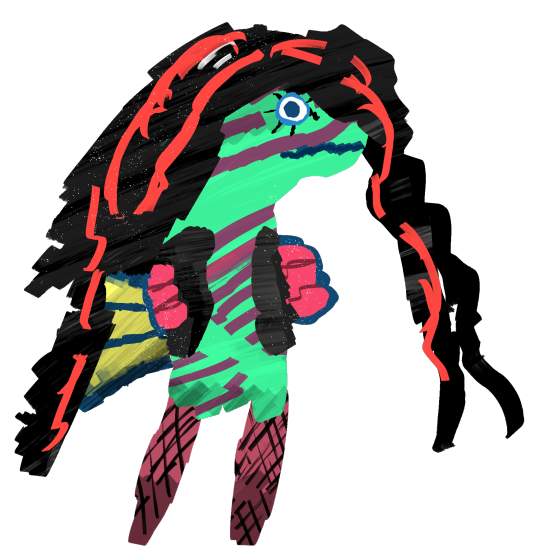


My biggest Splatoon OC thing yet; it's a full weird-sea-people-band!
MOUTHWASH FOR WHALES (クジラ用のうがい薬)
* Post-punk / Krautrock band.
* Best known for their singles "Polyp Anna", "Inkopolis I Love You But You're Sinking Me" and "Crispy Scales".
* Their music is far too weird to get any Turf War play.
* Consists of vocalist Ella, drummer Manuel, guitarist O'Carroll, keyboardist Tharassa and sound engineer Stahli.
ELLA (エラ)
* Salmonid (oversized Smallfry).
* Her birth name is The Lustful Bleeding Axe of Ikejime Rock (生首岩の好色な出血斧).
* Screams more than sings.
* Stopped participating in Big Runs after eating a terrified Inkling boy in his home.
* Is considered a sellout in Salmonid society for refusing to fight and die.
* That's hair dye dripping down her face.
* Vegan hippie, has a bedroom full of rose quartz.
MANUEL (マヌエル)
* Portuguese man-o'-war.
* Fascinated with the history of telegraphy.
* A bit of an airhead.
* Talks to his zooids for advice.
O'CARROLL (オキャロル)
* Octocoral.
* Tired of people assuming he has something do with the Octarians.
* Stylises himself as a badass, but really rather spineless.
* Loves younger men.
* People have often mistaken him for a Christmas tree.
THARASSA (ヴェラ)
* Moon wrasse.
* Thinks of themselves as "punk", but actually comes from a wealthy family of caviar farmers.
* Smokes a lot.
* Wishes people would stop calling them a girl.
* Afraid of the ocean.
STAHLI (スタリ)
* Mutant algal bloom.
* Came into existence quite recently.
* Born from algae exposed to radioactive Salmonid poop.
* A theologer in his spare time.
* Gets claustrophobic very easily.
I've even made an album cover.
This took me hours, but it was totally worth it. Worse ways to spend my life, I suppose.
The whole band is CC-BY-SA 4.0, feel free to use them anywhere you like!
#creative commons#digital art#painting#marker#splatoon#splatoon oc#splatbands#salmonid#man o war#octocoral#coral#wrasse#moon wrasse#fish#algae#algal bloom#album cover
164 notes
·
View notes
Note
can you draw a moon wrasse?? love ur blog btw

fish 205 - moon wrasse
102 notes
·
View notes
Text

fishuary day 3 is wrasse so i drew some wrasse. i actually didnt know much abt them before today
#i couldve added MORE but i didnt rlly want to#art#drawing#digital art#procreate#wrasse#surge wrasse#moon wrasse#mkcoskers flasher wrasse#fish#marine biology#fishuary2024
19 notes
·
View notes
Note
Maybe a moon wrasse?

Day 22
My Ko-Fi! (Get a Prioritised request or a doodle!)
Commision info!
23 notes
·
View notes
Video
youtube
Brightly Coloured Moon Wrasse / Crescent Wrasse Fish HD
#youtube#Fish#Aquatic Animals#Marine Fish#Wrasse#Moon Wrasse#Crescent Wrasse#Colourful Fish#Lokaranjan Aqua World Underwater Zone Mysore
2 notes
·
View notes
Text
Kny Mermaid Au Ramblings P4
I know more but I practically did every other well known demon slayer character in the series so I figured I'd do one last post explaining who the rest of the cast would be as mermaids. I've already done Akaza who's a Betta fish and Kaigaku who's a black electric eel. So now I'll be doing the rest of the demons and a lot of other characters. Lord have mercy for all the fish I looked up.
Remember all of the random lower moons in the ova series and Mugen train arc? Yeah. They're all minnow mers.
Now you're probably thinking Douma would be a rainbow fish right? Well I beg to differ and offer you my take. He'd definitely be a Fairy Wrasse mer.
https://www.google.com/url?sa=t&source=web&rct=j&opi=89978449&url=https://oceananimals.org/ocean-fish/wrasse-parrotfish/wrasse/fairy-wrasse/&ved=2ahUKEwjnq_PKusKGAxWMIEQIHR_jCskQr4kDegUI1AEQAA&usg=AOvVaw2YRDgIkmfKxDF7oBof4pf8

Nakime was a hard one but I think she'd be pretty as a black butterfly goldfish mer.
https://www.google.com/url?sa=t&source=web&rct=j&opi=89978449&url=https://www.petco.com/shop/en/petcostore/product/black-butterfly-goldfish-25-35-length-%2528carassius-auratus%2529&ved=2ahUKEwiQ9s_8vsKGAxXBHUQIHVDdBtsQr4kDegQIFxAA&usg=AOvVaw3BpMo0ntw0sPot4YwstgfD

Kyogai is a Black Drum mer.
https://www.google.com/url?sa=t&source=web&rct=j&opi=89978449&url=https://en.wikipedia.org/wiki/Black_drum&ved=2ahUKEwjs8fG2v8KGAxVkKEQIHZZEOY0Qr4kDegQIPRAA&usg=AOvVaw1Ip242VSs5Kmmf7IcyeJmp

Enmu is definitely an octopus mer. Specifically like the art by @cornfleaykes linked below.
https://www.tumblr.com/cornfleaykes/720378046334615552?source=share
Kokushibo and Yoriichi are the same thing being twins. Since Kokushibo is often associated with purple and Yoriichi orange, I found a fish that could match both of them. Both twins are Biota Orangetail Damselfish mers. Only Yoriichi has unusually more orange on his tail.
https://www.google.com/url?sa=t&source=web&rct=j&opi=89978449&url=https://www.algaebarn.com/shop/captive-bred/fish/biota-orangetail-damselfish-chrysiptera-cyanea/&ved=2ahUKEwiIgui4xMKGAxUzke4BHVgcABsQr4kDegQIZBAA&usg=AOvVaw30i-fXBi32NTynUJIaGegk

Daki and Gyutaro are vastly different to match their appearances. Gyutaro is a black Hagfish mer.
https://www.google.com/url?sa=t&source=web&rct=j&opi=89978449&url=https://glassvirtualzoo.wordpress.com/black-hagfish/&ved=2ahUKEwjYgdypxsKGAxXOEkQIHWhYF6kQr4kDegQIGBAA&usg=AOvVaw1uGruM_OsZQR1lXdwTSOYt

Meanwhile Daki/Ume is a Pink Dragon Siamese Fighting Fish mer because I liked how pretty and flowing the fins were and it seems to match her well.
https://www.shutterstock.com/image-photo/pink-dragon-siamese-fighting-fish-betta-384303799

Gyokko is a mutated Blue eel mer. That's it.
Hantengu was a tricky one. I know I already listed a WHOLE BUNCH of the Kny characters as Betta fishes but I'll go ahead and say that Hantengu and his clones would all be a pod of Betta fish mers related to each other because honestly Betta Fish can come in literally EVERY color. So Urami and Hantengu are black betta fish mers. Sekido is a red one. Urogi yellow. Karaku green but a lighter green than Tanjiro. Aizetsu blue. And Zohakutan is a dark purple color.
Urokodaki would be a common goldfish mer and Jigoro is like Zenitsu and Kaigaku an electric eel mer.
Hairou would be a blacktip reef shark mer.
https://www.google.com/url?sa=t&source=web&rct=j&opi=89978449&url=https://www.tetiaroasociety.org/island/fish/blacktip-reef-shark&ved=2ahUKEwjchKSFy8KGAxXz4ckDHX8GPDkQr4kDegUI6QEQAA&usg=AOvVaw36mXG9EcE-8peU273fAVTB

Muzan is a rare pitch black Bigeye Sand Tiger Shark mer like the one in the article.
https://www.newsweek.com/scientists-find-new-all-black-glowing-shark-species-ninja-lanternshark-409718
Rei and her daughter are both Brown Sweetlips mers.
https://www.google.com/url?sa=t&source=web&rct=j&opi=89978449&url=https://www.shutterstock.com/search/brown-sweetlips-fish&ved=2ahUKEwiS3POCzMKGAxWx7skDHaGFLogQr4kDegQIExAA&usg=AOvVaw3goHa1p3bOS5lBqxcq4ZAx

Haganezuka and the other sword smiths would be manta ray or sting ray mers mostly because I saw some art of Manta ray Mermaids and I think they'd look cool as them.
Rui and the rest of the spider demon are Albino Diving Bell Spider drows which turns out are a real species of spider that lives underwater.
https://www.google.com/url?sa=t&source=web&rct=j&opi=89978449&url=https://www.treehugger.com/nature-blows-my-mind-strange-scuba-diving-spider-4855467&ved=2ahUKEwjW68y8z8KGAxVKHUQIHRSQBwAQr4kDegQIExAA&usg=AOvVaw3T_2Bats74FtQgsKBBWGkX

Bonus mentions
Susamaru is an octopus mer too. Yahaba is a Cleaner fish mer. The swamp demon is just a trio of sea monsters. Tanjiro's ancestors in Yoriichi's flashbacks are Betta fish like the rest of Tanjiro's family. Tokito's father is a red herring mer. Sabito is a common orange Koi. Tengen's brother is a black butterfly koi mer. Monoko is a blue Glofish mer. And Giyuu's sister is the same species of mer as him.
Both Uta and Michikatsu's wife are both Rainbow Trout mers.
https://www.google.com/url?sa=t&source=web&rct=j&opi=89978449&url=https://www.wildtrout.org/content/rainbow-trout&ved=2ahUKEwjL2vXv0cKGAxU_GtAFHat1L9kQr4kDegQIGBAA&usg=AOvVaw1tXsb92zhaFmgDqHcmoWuo

And finally the Ubuyashikis. Amane and Their daughters are all white spotted jellyfish mers.
https://www.google.com/url?sa=t&source=web&rct=j&opi=89978449&url=https://www.crittersquad.com/fact-sheets/white-spotted-jelly-fact-sheet/&ved=2ahUKEwiY466vs8SGAxX748kDHfbqDk8Qr4kDegQIFhAA&usg=AOvVaw2_PbSrvezrdYdHFk1N7iKi

Meanwhile Kagaya and their son are water dragon hybrids.
https://www.google.com/url?sa=t&source=web&rct=j&opi=89978449&url=https://www.pinterest.com/pin/371406300502782906/&ved=2ahUKEwiyoqaDtMSGAxUJ5ckDHVROPSsQr4kDegUIygEQAA&usg=AOvVaw15b7fDD-PTuPL-qbgkndvL
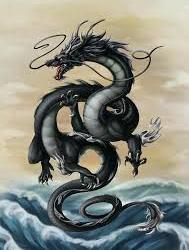
Hoo boy. That was a lot. But I'm all done now explaining who everyone is in the mer au. Honestly it was fun coming up with these.

#demon slayer#kny mermaid au#Douma#gyutaro#kny daki#Haganezuka#kny hairou#Enmu#Rui#Sabito#Uta#Kokushibo#Yoriichi#Urokodaki#jigoro kuwajima#muzan#Kny Rei#Yahaba#susamaru#kyogai#nakime#hantengu#kny urami#sekido#Karaku#aizetsu#urogi#zohakuten#gyokko#rui ayaki
40 notes
·
View notes
Text

Moon Wrasse (Thalassoma lunare), family Labridae, Great Barrier Reef, Cairns, Australia
Like many wrasses, this species is a protogynous sequential hermaphrodite. They start off their lives as females, and become males when they get older.
photograph by Leonard Low
#wrasse#thalassoma#labridae#fish#ichthyology#animals#nature#australia#ocean#pacific ocean#indian ocean
151 notes
·
View notes
Text

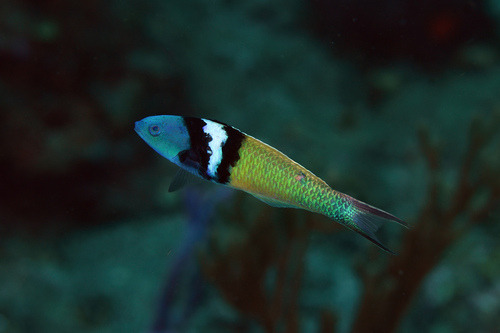
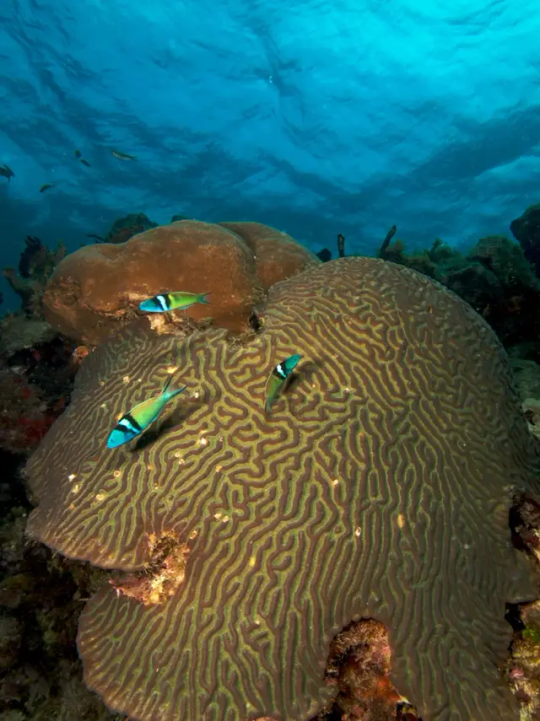
Once in a Blue Moon: The Bluehead Wrasse
The bluehead wrasse (Thalassoma bifasciatum) is a small species of wrasse found only in the western Atlantic Ocean; particularly around the Caribbean and the northern coast of South America. They inhabit coral reefs, and occasionally along sandy bottoms and sea grass meadows. Bluehead wrasse prefer shallow, warm, clear water and reefs with lots of hiding places that they can easily access.
T. bifasciatum is noted for its bright coloration. Females and small males are bright yellow with a white underbelly, while larger males have a greenish body and a blue head, seperated by thick black and white stripes. These large males are typically 7-8 cm (2.7-3.1 in) in length, while smaller males and females are around 6 cm (2.3 in).
Like many coral reef fish species, the bluehead wrasse engages in protogyny. All eggs hatch as females, and as they mature some change into males. These young males, known as initial phase (IP) males, continue to resemble females but are fully capable of reproduction. Eventually, the largest of them transition into a secondary phase, also known as the terminal phase (TP). TP males carry the characteristic blue and green markings of bluehead wrasse, and are significantly larger. The transition from female to IP, IP to TP, or even directly from female to TP can occur at any time, and is particularly triggered by removal of dominant (TP) males from a population.
Reproduction typically occurs from January to August, though it can continue sporadically throughout the year. Mature adults participate in group spawns, in which females and both male types converge at spawning sites. Males compete for proximity to females, and typically TP males will closely guard access to a harem of 30-50 females, while IP males will attempt to use their coloring to sneak in and mate surreptitiously. T. bifasciatum are broadcast spawners; both sexes release their gametes into the water column, where they are fertilized and carried away by the current.
Eggs spend 6-8 months free floating, sometimes drifting miles from their spawning grounds. After hatching into juveniles (larvae), they burrow into the sand and remain there for several months before emerging to seek out a coral reef in which to shelter. At this point, a year after hatching, they are typically mature and ready to mate themselves. Individuals can live up to 3 years in the wild, though juvenile mortality is high.
Bluehead wrasse are cleaner fish. The majority of their food are parasites picked off of larger fish, as well as shrimp, krill, crustaceans, and plankton gathered from the coral itself. However, they are also often food themselves for larger fish, moray eels, and stingrays.
Conservation status: The IUCN considers the bluehead wrasse to be Least Concern. Their primary threat is habitat loss due to coral reef bleaching.
If you like what I do, consider buying me a ko-fi!
Photos
Doug Perrine
Terence Zahner
Nick Hobgood
#bluehead wrasse#Labriformes#Labridae#wrasses#ray-finned fish#bony fish#fish#marine fauna#marine fish#coral reefs#coral reef fish#atlantic ocean#queer animals#queer fauna
45 notes
·
View notes
Text
day 206, 17/01/25 - fish of the day is the moon wrasse (Thalassoma lunare)

17 notes
·
View notes
Text
First Fish Yap Post - Labridae!
I figure it fit for the first post in this blog to be about my favourite fish family ever - Labridae - the wrasses, parrotfishes and cales.
Introduction Labridae is a diverse (and extremely cool!) family of fishes, encompassing nearly 700 species, and occur in tropical and temperate marine waters worldwide - none inhabit freshwater. Typically, they are elongate, small to medium in size and colourful, and the greatest species diversity is found on tropical coral reefs.

This green fellow is Thalassoma lunare - the Moon Wrasse. By all means, a fairly 'typical' wrasse.
Taxonomy The number of species included within Labridae has increased over time, not only by the description of new species, but also from species from other families being reclassified as members of Labridae - notably, the parrotfishes (formerly family Scaridae) and the cales (formerly family Odacidae). The parrotfishes and cales were always considered to be close relatives of Labridae, but genetic studies have shown that these groups are deeply nested within Labridae, and thus should be classified in this family. The closest living relatives of Labridae, based on genetic evidence, appears to be the curious family Centrogenyidae, the false scorpionfishes.

This is Scarus rivulatus - the Surf Parrotfish. Formerly placed in the family Scaridae, but along with all other parrotfishes, is now included in Labridae

Siphonognathus caninis - the Sharp-nosed Weed-whiting. Formerly placed in Odacidae (a family of temperate marine fishes found only in southern Australia and New Zealand), but along with all other Odacidae species is now included in Labridae.
Diets and Feeding This is where the labrids really get interesting. The vast majority of labrids are carnivorous - typically subsisting on crustaceans, molluscs and other invertebrate prey. The 'typical' carnivorous wrasses possess simple, peglike teeth to break down their (often shelled) prey, but many groups show interesting specialisations to the mouth, jaws and teeth to exploit other food sources.
The aforementioned parrotfishes and cales are largely herbivorous, and have specialised tooth structures to facilitate this diet - in parrotfishes, their teeth have fused into a thick, parrot-like beak to scrape algae from rocks. In doing this, the top layer of rock is also scraped off and ingested, to be later excreted as the fine white sand on tropical beaches that humans find so appealing. So next time you find yourself on a gorgeous tropical beach, don't forget that you're standing on a giant accumulated mound of parrotfish poo! The cales take a similar but different approach to herbivory - they too have fused beaklike teeth, but use them like a pair of garden shears to clip mouthfuls of algae and seaweed.
Some wrasses are plankivorous, aggregating in shoals that hover at the edge of the reef to pick at plankton floating by on the currents - this guild includes the likes of the genus Cirrhilabrus and smaller species of Thalassoma.
The Slingjaw Wrasse (Epibulus insidiator) has a most unusual mouth structure that allows it to massively extend it's jaws, forming a frankly absurd tubelike structure to allow it to slurp up small fish and shrimp that may be hiding in small crevices. The ability to protrude the mouth out like this is common amongst ray-finned fishes, but few can do so to the ridiculous extent of the Slingjaw Wrasse. I HIGHLY recommend looking up a video of the slingjaw in action, it's super cool.

Epibulus indidiator (Slingjaw Wrasse) showing off it's frankly absurd jaw protrusion. When the jaws are retracted, they sit flat against the rest of the head.
The various species of tubelip wrasses are specialists on a very strange diet - the mucus secreted by corals. As the name suggests, these fishes have unusually long and fleshy lips that come together to form a sealed tube, with which the fish uses to create a tight seal against a piece of coral and sucks up the mucus.

Labrichthys unilineatus, one such species of tubelip wrasse. Look at those lips!
Perhaps the best-known feeding specialisation in wrasses is that of species that clean other fishes of parasites, food waste and dead skin. Many wrasse species engage in cleaning behaviour as juveniles, but a few (such as the genus Labroides, the well-known 'cleaner wrasses') continue this behaviour into adulthood, and make it their primary source of sustenance. These small, striped wrasses will set up 'cleaning stations' on the reef, attended by one or more cleaner wrasses - typically, a reef with have several of these stations. Most sedentary fish species will simply visit the cleaning station closest to their territory, but wider-ranging species are willing to travel considerable distance to visit the stations that offer the best service, so competition between cleaning stations is fierce to provide the best services to win these picky customers. The cleaner wrasses will give preferential treatment to non-local fish to win their favour, and can individually recognise hundreds of fishy customers from different species. Even large, predatory fish species are accepted customers, and the cleaner wrasses will happily enter the mouths and gills of groupers, sharks and eels to clean them. Only on very rare occasions will such a predator eat a cleaner wrasse - the benefit of the wrasse's cleaning services is greater to the predator than the immediate caloric benefit of consuming the wrasse, so the wrasse can swim straight into the mouth of predatory fish with impunity.

Labroides dimidiatus (Bluestreak Cleaner Wrasse), the best-known species of the genus Labroides.
Sex-swapping and Reproductive Strategies An extremely interesting (but not entirely unique) trait of the wrasses is their ability to change sex, and the reproductive systems this enables. Almost all wrasses are born females, and can become male later in life. Often, juvenile female wrasses will join harems, consisting of numerous juveniles and adult females, and a single male. In these harems, there is a strict dominance hierarchy, with each fish harassing those lower in the ranks than itself. This constant low-level stress inhibits the hormone production that would cause a female wrasse to transition into a male - except for the most dominant fish, which is free to transform into a male. Usually, the dominant male will bear different colouration and patterning to the other fish in the harem, making the boss easy to pick out from the rest. The dominant male in a wrasse harem will frequently spawn with the adult females. However, if the dominant fish is removed from the harem (eg. if he dies, or is kicked out after losing a dominance contest to another wrasse), the most dominant female will become male to take his place. The behavioural change is almost instantaneous - the new dominant fish will become more aggressive - but the change in colouration and gonads can take a few weeks to a few months.

Female Thalassoma amblycephalum (Blunthead Wrasse)

Dominant male of the same species. It's easy to see how often, male and female of the same wrasse species can be incorrectly identified as being different species - even by scientists!
Intelligence and Tool Use Perhaps, 'intelligent' is not a word often used to describe fishes, but wrasses would certainly be among the brainiest of the fishes. The previously mentioned Bluestreak Cleaner Wrasse is one of the few fish to have demonstrated self-awareness via the mirror test (although the mirror test has rarely been attempted on fishes, so perhaps the number of self-aware fish out there is higher than we realise), and several wrasse species (particularly the tuskfishes of the genus Choerodon) have been observed to use tools. Tuskfishes have a pretty fearsome set of teeth that they use to break through the shells of their prey, but that alone is not enough to break the thickest of clam shells - so they use tools to smash the clams. A tuskfish, upon finding a clam too solid to bite through, will carry it in it's mouth to a habitually used rock or knob of coral, and with the clam still in it's mouth, flick it's head to hit the clam against the rock to break it. Only rarely does this work the first try, but the tuskfish is persistent, and will repeatedly hit the clam until it breaks, allowing the fish entry to consume the flesh inside.

Choerodon anchorago (Anchor Tuskfish), one species that has been observed to use tools to break open clam shells.
Sleep Labrids have some pretty interesting behaviours to avoid being eaten while they sleep (although it could be argued fish do not truly 'sleep', saying 'sleep-like resting state' every time is too wordy so I'll just say 'sleep'). Many species will burrow into the sand to sleep, to hide from predators - a behaviour that can be alarming to the beginner saltwater aquarist, who may be terrified to find that their newly-acquired wrasse has suddenly dissappeared when the tank lights are turned off! Other species (especially the parrotfishes) produce a bubble of mucus to sleep in, like a sleeping bag made of snot. They make a new bubble every night, the purpose of which is to conceal the fish's scent from predators as it sleeps in a crevice or under a head of coral, as well as to prevent parasites settling on the fish's skin. In the morning, the fish will eat it's way out of it's mucus bubble.

A parrotfish (I'm not sure which species exactly) sleeping in it's mucus bubble.
Oh, and did I mention that some wrasses are drop-dead GORGEOUS???? Just LOOK at these

Cirrhilabrus hygroxerus - Monsoon Fairy Wrasse

Cirrhilabrus cyanopleura - Blueside Fairy Wrasse. This colour form of the species with the yellow spot on the flanks was previously considered a seperate species (Cirrhilabrus ryukyuensis), but has been reclassified as a colour variant of C. cyanopleura.

Macropharyngodon meleagris - Leopard Wrasse

Gomphosus varius - Pacific Bird Wrasse. Boy, why you so nose??

Cheilinus undulatus - Humphead Maori Wrasse. This is the largest species in the family Labridae (reaching a whopping 2.3 metres!), and unfortunately also one of the most threatened - it is heavily fished for the seafood trade, and it's slow growth makes it easily overharvested.

Lachnolaimus maximus - Hogfish
16 notes
·
View notes
Note
Hello! Just wanted to say your Merfolk Hashira headcanons were amazing & I couldn't stop reading it. Rengoku gave me a bit of Little Mermaid vibes. 😂😂😂
But I wonder what the Upper Moons & the Kamaboko squad be like as Merfolk?
Kyojuro out there singing Part of Your World for real XD! Ima pick Kamaboko Squad for this since it’s easier!
KNY Kamaboko Squad Shitpost; Merfolk AU
Second Part of the Hashira Merfolk AU! This is actually very cute, I like it a lot so here it is~!

Overall
Basically. Almost everything stated in the Hashira post applies to both the Kamaboko Squad and the Upper Moons but these five have a different concept
Just like the top grade, Hashira. The Kamaboko Squad possess the same lunar energy-powered oceanic magic inside those moonstone pendants and can do the same feats the Hashira can
Their magic is just a lot weaker than compared to the Hashira. Depending on the rank of the solider for the Ubuyashiki Royal Family and their underwater kingdom, the magic grew alongside with the rank
They all possess a unique weapon to their own character, alongside their magic and default summon-able weapons, used to fight off threats
Kamado Tanjiro
Tanjiro is a red queen snapper merman
Tanjiro always prays for the poor life of the vicious sea predators he is forced to kill. He feels sorry for them
Spends a lot of time honing his magic, above of the water. He likes practicing in the world over the sea
Kamado Nezuko
Nezuko is a rosy scale fairy wrasse merwoman
She possesses the demon siren voice and demonic traits, but her merwoman anatomy has not changed
Nezuko loves playing with the many sea creatures around her; fishes, sea turtles, jellyfish, clams, just anything cute!
Agatsuma Zenitsu
Zenitsu is a yellow sailfin tang merman
Very much despises humans and gets annoyed each time he has to clean up a shipwreck
Zenitsu has very fast swimming speed in general, able to tap into a brief speed boost and surpass Sanemi’s speed
Hashibira Inosuke
Inosuke is a atlantic blue marlin merman
Inosuke has family-history with the rainbow loaded comb jellyfish monster, Douma
Please don’t give him a weapon. He’ll go find a swimming human, chase them and jab at them
Tsuyuri Kanao
Kanao is a pink flowerhorn cichlid merwoman
Her cooking skills for merfolk is immaculate as she can prepare such luxurious dishes easily
Kanao loves styling the hairs of her sisters/friends with the signature Kocho butterfly-styled hairclips
Shinazugawa Genya
Genya is a dark purple-black payara merman
Genya has sharp Dracula-like fangs and he is a prominent predator, able to tear apart beasts like sharks
Is quite susceptible to merwomen singing and siren songs, with his shyness towards girls. He can easily be swayed
I don’t know the artist name but credit, of the art above, goes to him/her/them!
#kimetsu no yaiba#demon slayer#anime and manga#kny imagines#headcanons#kny characters#kamado tanjiro#tanjiro kamado#kamado nezuko#nezuko kamado#agatsuma zenitsu#zenitsu agatsuma#hashibira inosuke#inosuke hashibira#tsuyuri kanao#kanao tsuyuri#shinazugawa genya#genya shinazugawa#merfolk au#kny kamaboko squad#kamaboko squad
61 notes
·
View notes
Note
Tell me about the fish you saw snorkeling please :)
Oh my GOD I nearly burned my self with my coffee when I saw this. Thank you so much for asking, but also you've opened the flood gates because it just so happens I am about to dump so many fish on you. While I primarily study freshwater fishes, I am a lover off all things aquatic, so here we go (all these images are from the internet):
Parrot fish galore and HUGE ones at that. The biggest one I saw looked like this. I don't know my scarids very well, but I do know that I saw a bumphead parrotfish. So funny looking. I was honestly surprised by how all the fish out there are CONSTANTLY nipping at the corals, but the current was pretty strong so we all had to swim a lot. It makes sense that they always need to be eating. I had no idea life on the reef was so turbulent
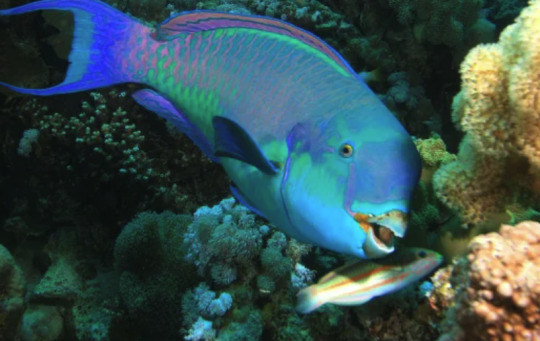
A lot of acunthurids. No blue tangs but plenty of brown ones and some unicorn tang! The ones I saw had really small humps.
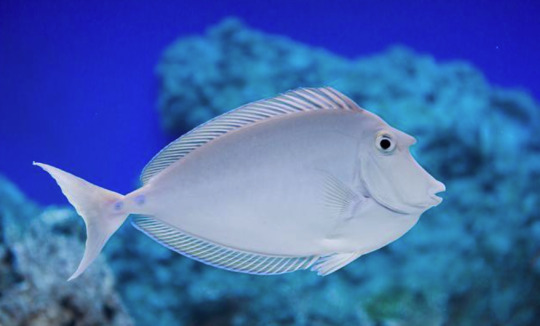
So the common name for acunthirds is surgeonfishes because they have these sharp, blade like spines on their caudal peduncle called a scalpel. You can see it a bit more clearly on the Clown Unicornfishes (which were my fave cause the colors were so bright). Here they're the bright orange processes near the tail.
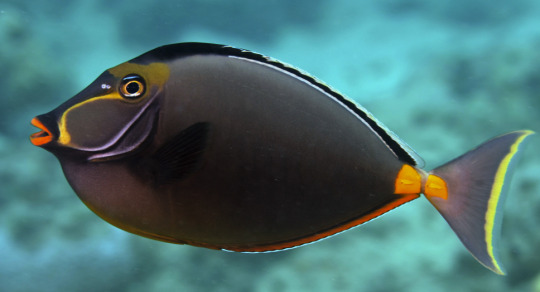
Wrasses. SO many wrasses. We saw birdnose wrasses with their long snoots, moon wrasses that were as colorful as rainbow lorikeets. My favorite were the cleaner wrasses following all the big parrotfish around and eating their ectoparasites,
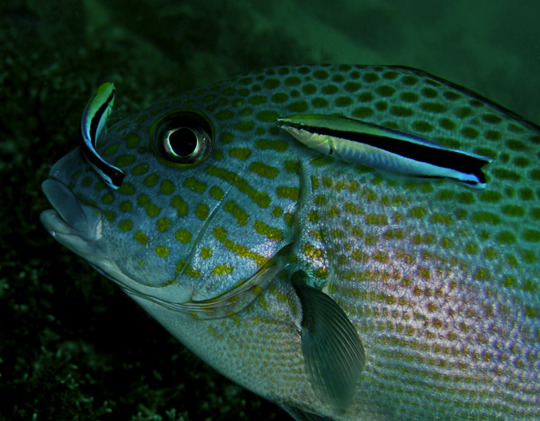
I saw a moray!! That was the most unexpected find for me. I was the only one in my group to see one, but it was so far out that the crew working the sailboat had to call me back in 😅 It was brown and spotted black and looked just like this guy. I didn't actually see his head, but I saw his long long body. He was huge!!

Some gobies hiding in their holes. Apparently some species of goby have a mutualistic relationship with shrimp. The shrimp digs a series of tunnels in the sand and the goby stands sentinel at the entrance. The shrimp then maintains contact with the goby with its long antennae so that it knows if the goby moves or startles when predators are nearby.
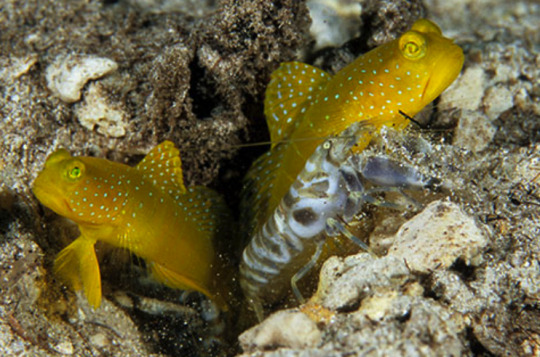
The goatfish was probably my second favorite find after the moray because I had no idea they were out there. Goatfish have two long chin barbels covered in tastebuds that they use to probe along the sand in search for prey. They are quite dextrous barbels too. They flick em around so fast!
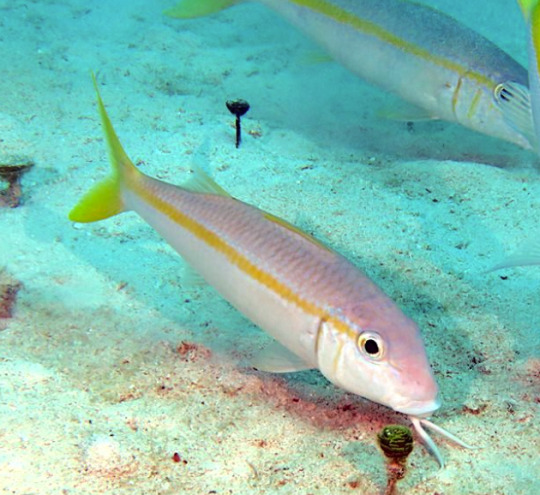
I got stung by something! it whipped me across the face pretty much 20 minutes into the water and it felt long and filamentous so i thought maybe it was some stray strand of anemone or jellyfish with active nematocysts. The crew member said it was likely a small jelly so woohoo! I got stung by a jelly on the great barrier reef :D
Triggerfish. Iw as hoping to see more tetraodonotiforms like puffers or filefish or a cowfish maybe, but I'm glad I still got to see at least one representative of the order cause they are among the most bizarre groups of fishes

This Moorish Idol that looked exactly like Gill from finding nemo
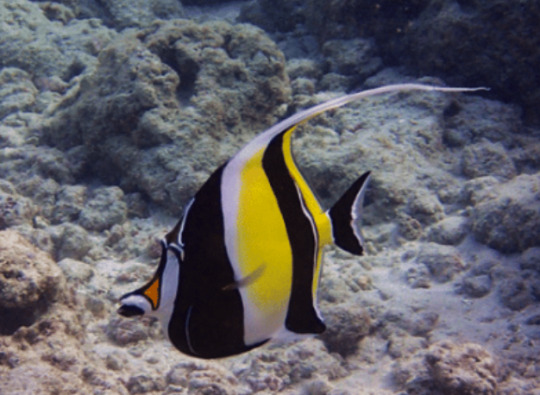
Lemonpeel angelfish, bluegirdle angelfish, emperor angelfish, you name it.


a lot of chaetodontids too. As I said, I don't study marine fishes so all the butterfly fishes looked so similar to me XD most of them were some combination of white, yellow, and black with their characteristically tall bodies and narrow snouts.


Giant clam!!! THEY WERE SO BIG. And so colorful. The movement of their spiracle truly hypnotized me.
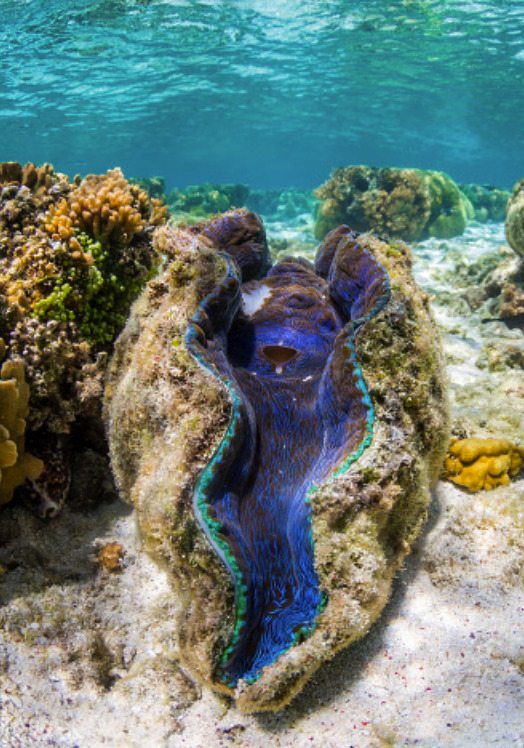
Alright. That's all I got time for at the moment, as I need to pack and head up to the rainforest for the last leg of my trip. I'm sure I have forgotten dozens of fish already XD Thank you for attending my show and tell and for expressing interesting. Truly, I'm living any biologists dream rn, and I couldn't be more grateful for the opportunity to visit such a beautiful part of the world 🥲
25 notes
·
View notes
Note
jpeg im having a day can you tell me about something that makes you happy. fish or something
sure mate :] here are some things (it is long so i have put it into a readmore)
my favourite fish is probably the hadal snailfiah but perhaps you already know that... i think they look very nice! i like to think that i look like them while smiling even though they are fish and i am not. i wish i could be one though can you imagine. if you and i were fish i hope that we would see each other in a coral reef from time to time even. also a runner up is the parrotfish and the humphead wrasse. the parrotfish for its cool colours and the fact that they encase themselves in mucus when sleeping! and the humphead wrasse because when i was younger i watched a documentary on how some female humphead wrasse become males. and that's why i am transgender btw
the moon has been looking very big and bright recently... on thursday last week i yelled to some of my friends about how beautiful she is!! and i was right, too... i think the moon is currently in the gibbous waxing phase? I LOOKED IT UP I'M RIGHT LET'S FUCKING GO anyways. moon is big like a nightlight in the sky isn't that wonderful? makes me want to get through the day so i can tell my family what phase of the moon is next
i think that video games are one of the best inventions humans have ever made. a lot of my friends have been made through connection over video games. and a lotsl of work goes into them. lots of video game have really good music and sometimes dialogue and sprites or characters and even the ones that don't have those things still have so much work has been put into them. and i think video games are like am amalgamation of humanity's love for stories ... i have been playing a lot of my favourite video games recently! but i recommend the stanley parable / ultra deluxe, ultrakill, undertale, half life, etc. they are very fun and they have much heart in them
hmm last thing. i hope you have a better day tomorrow! remember that things keep going... the end of the world is neither today nor tomorrow and there is still much hope to be had. good things will come again as surely as the sun rises. people care about you. you care about people. love is alive and well
4 notes
·
View notes
Note
Is Moon wrasse a brackish fish? I am keeping it on 1.008 and its doing fine.
Lets do the easy answer first then the convoluted explanation next! As far as I know, the Moon Wrasse is not found in brackish areas. I'm pretty sure it is only found in and around reefs (but hey I might be wrong there).
The convoluted part is that salinity tolerance for fish is somewhat on the fluid side. I remember reading about a very prominent and well experienced aquarist who stated that he kept all FOWLR tanks for his clients at 1.012, though on paper all were saltwater fish. He reported they all lived healthy lives. But anecdotal evidence is weird like that - just because somebody reports success doesn't make it the best for everybody with all fish in all situations. Until somebody does an expansive experiment on the subject, I think it's best to treat this variable as an unknown and default to proven safe environmental conditions.
4 notes
·
View notes

